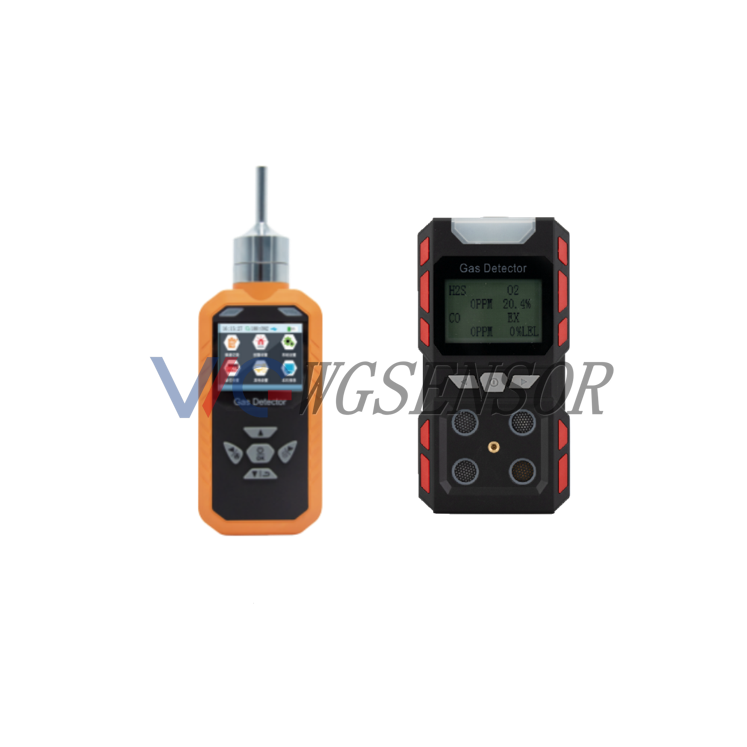The main function of a gas detector is to detect the existence and concentration of nearby gases. Gas detectors can be divided into two categories, namely the portable gas detector and fixed gas detector. The two categories contain different types of products. Portable gas detectors can be further divided into pump-suction gas detectors and diffusion gas detectors.
Pump-suction gas detectors and diffusion gas detectors have the same detection principle, which is to detect the sample gas with sensors and then convert to corresponding value through the circuit magnification to display on the screen. Flammable gases are usually detected with the catalytic combustion sensors while the toxic gases are detected by electrochemical sensors. Difference between the pump-suction gas detectors and diffusion gas detectors lies in the sampling method.
Diffusion gas detector introduces gases into the gas detector along with the flow of air in the detection area, thus it can detect continuously, real-time and accurately whether there’s toxic and harmful substances in the air. Generally, the diffusion gas detector is used in open occasions, such as open workshops.
In detection, the air in the detection area flows slowly into the diffusion gas detector and then the detector completes detection. Diffusion gas detector shall be placed on site. Such a detection method is affected by the detection environment, such as ambient temperature, wind speed, and is not suitable for low pressure gas sources. Its advantages is lower cost than the pump-suction gas detector.
Pump-suction gas detector is equipped with a gas sampling pump, when it works the power drives the gas sampling pump to sample the gas in the measuring area, and then sends the sampling gas to the instrument for testing. Pump-suction gas detector is characterized by fast detection speed, long-distance measurement of dangerous areas, and maintenance of personnel safety. It’s suitable for occasion where the gas detector can not be placed on the spot, or occasions that have special requirements for reaction speed and pressure difference.


Please contact us for free quotation by form below. We promise the quickest response within 24 hours: